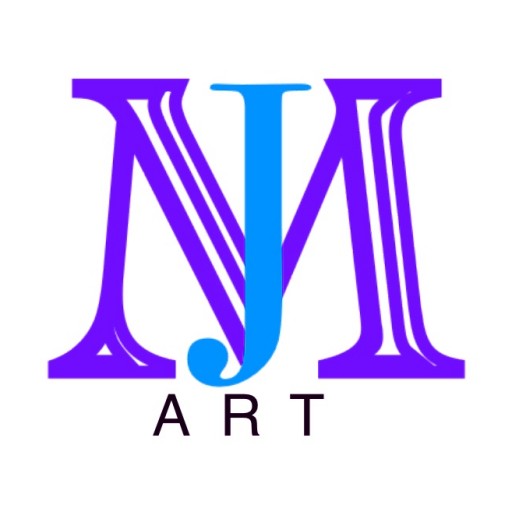Recommended Equipment........
Listed below are the items of equipment we will be using in our tutorials. You don’t need to rush out and purchase all the recommended equipment immediately, but having the right equipment really does make a huge difference to the learning process and you will get better results from these tutorials. We will provide you with lists of the equipment we recommend and tell you which items we feel are essential and which items you may wish to purchase at a later date. It is better to have a few quality items rather than purchase a load of cheaper materials which may cause you a lot of frustration and disappointment while trying to follow these tutorials. Using better materials will also mean that your pictures and paintings will stay looking beautiful for many years to come as they have better lightfast qualities than student grade paints and pencils…
Paints
We will be using Winsor and Newton ‘Professional’ (or ‘Artist’s’) quality paints. Although professional paints are a bit more expensive than student paints, they have more pigment in them, meaning a little paint goes a long way! Professional paints also have much better lightfastness, so your artwork will stay beautifully bright and vibrant for many years to come. We have chosen colours that are transparent or semi-transparent, as this helps when painting in layers, enabling you to create subtle differences in hue and tone and achieving a more realistic 3D picture. We have also listed Daniel Smith alternatives, as Daniel Smith paints are another good quality brand, with good lightfastness and beautiful vibrancy. Click here for the PDF List.
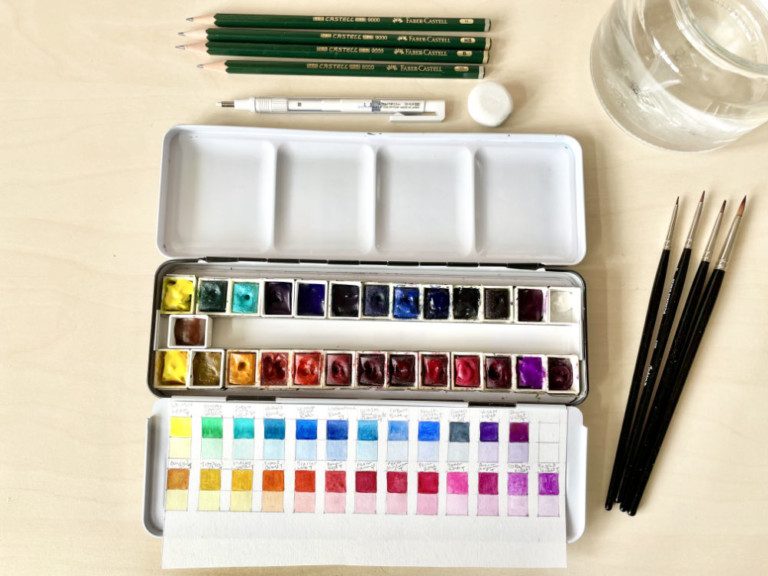
Paint Brushes
Finding good brushes can often be trial and error! For paintings that have a lot of detail in them, it is important to have brushes that give you a lovely fine point. We have been using Jackson’s Art Studio Synthetic S.505 brushes, sizes which are a pointed round brush and they come in a good range of brush sizes. We also have been trying out Jackson’s Art Kite synthetic brushes and Rosemary & Co’s Designer synthetic Series 344 brushes, which also come in a range of sizes and they have a beautiful point to them. The most expensive are the Jackson’s Kite brushes.
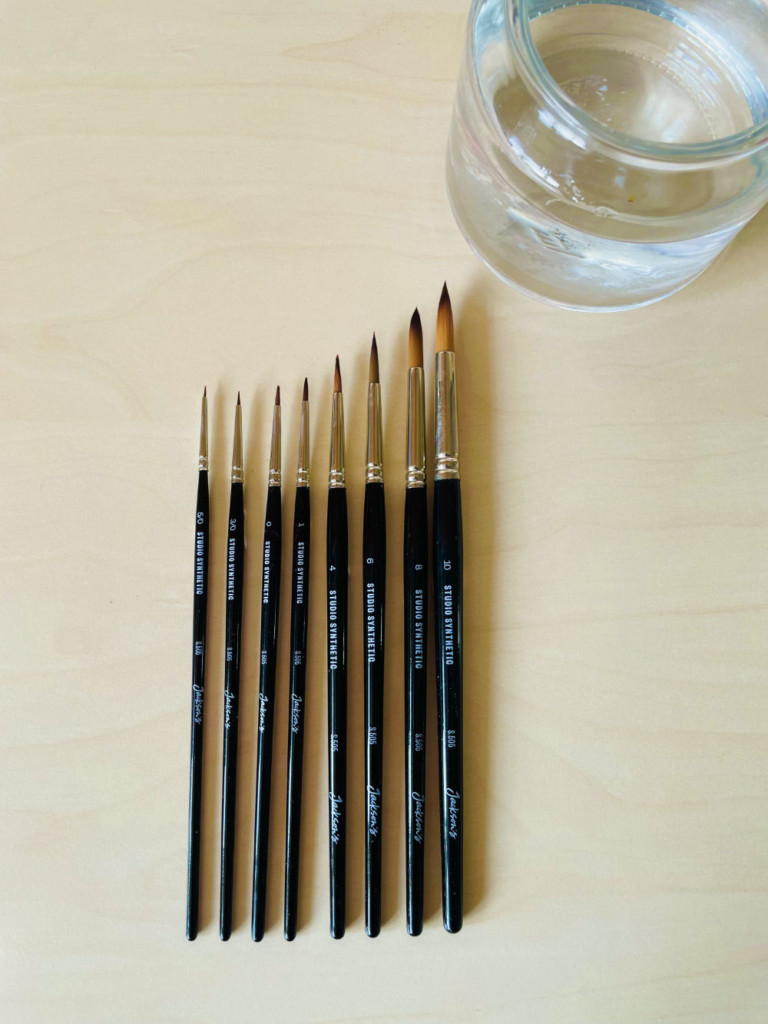
Coloured Pencils
As with watercolours, the quality of coloured pencils is important. We are using Faber-Castell Polychromos coloured pencils for these tutorials. Polychromos are a good artists’ quality brand of coloured pencils, with good lightfastness. They are a very popular brand of coloured pencil amongst artists. Other good quality brands are Derwent Lightfast and Caran D’Ache Luminance.
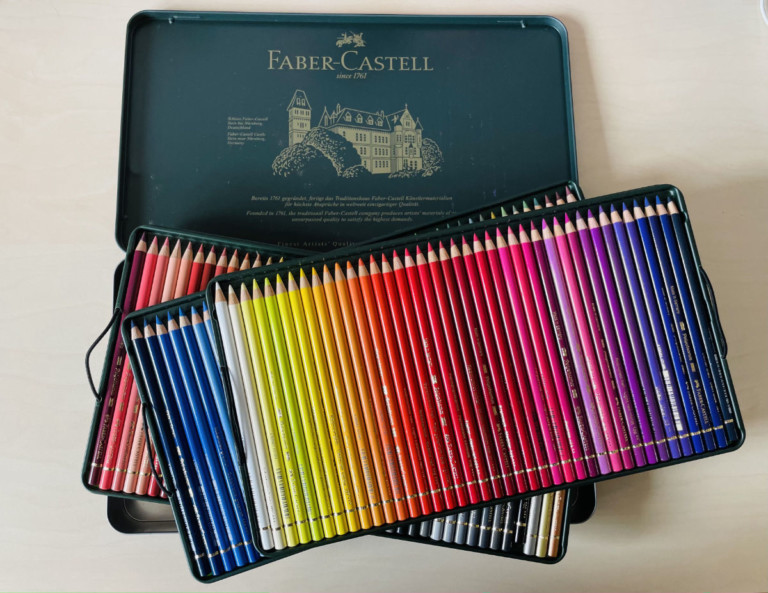
Paper - Watercolours
For most of our tutorials, we are using Fabriano Artistico Extra White 300g/m – 140lbs 100% cotton Hot Pressed watercolour paper in block pads. This paper has a lovely smooth quality and works well with both watercolours and coloured pencils. We tend to use the block pads as this removes the need to secure sheets of paper onto a board using acid free self adhesive artists’ tape. The beginner tutorials will be on 9″ x 12″ sheets of paper, which you can buy as a block as seen here (right). Some of the larger, more advanced tutorials may be on 14″ x 20″ paper.

Paper - Coloured Pencils
For a lot of the coloured pencil tutorials, we will be using Fabriano Artistico Extra White 300g/m – 140lbs 100% cotton Hot Pressed watercolour paper. Where more texture is needed in a tutorial, for example things such as fur, we will be using Clairefontaine Pastelmat paper or Pastelmat board.
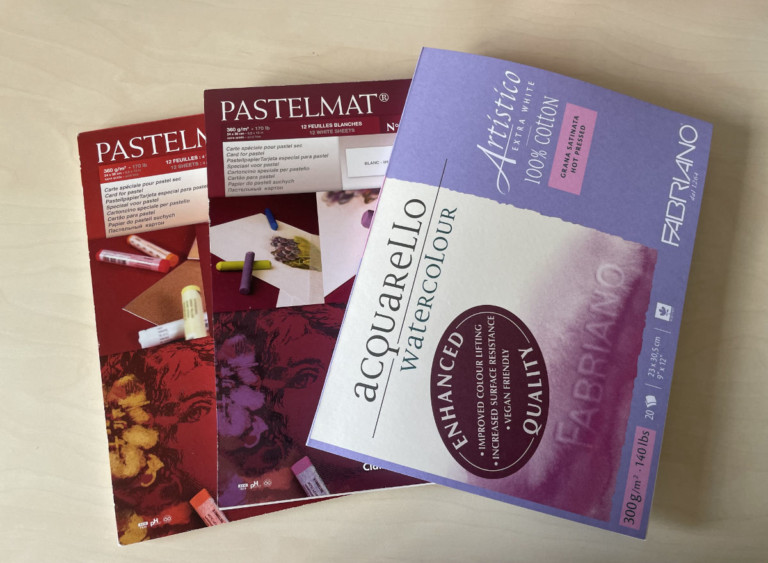
Other items recommended
Here are a few other items that we recommend.

